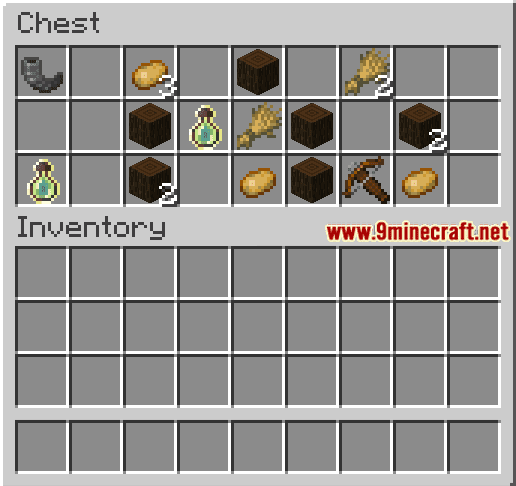Goat Horn Feel Wiki Guide
This Minecraft tutorial explains how to craft a Goat Horn (Feel) with screenshots and step-by-step instructions.
In Minecraft, a Goat Horn (Feel) is a new item that was introduced in the Wild Update. The Goat Horn (Feel) is one of the 8 different types of Goat Horn. Each type of Goat Horn plays a unique, loud sound that can be heard from far away. The Goat Horn (Feel) can be obtained from goats ramming or a Pillager Outpost.

Let’s explore how to add a Goat Horn (Feel) to your inventory.
Where to find a Goat Horn (Feel) in Creative Mode
Minecraft Java Edition (PC/Mac)
Here is where you can find a Goat Horn (Feel) in the Creative Inventory menu:
| Platform | Version(s) | Creative Menu Location |
|---|---|---|
 Java Edition (PC/Mac) Java Edition (PC/Mac) |
1.19 |  Miscellaneous Miscellaneous |
 Java Edition (PC/Mac) Java Edition (PC/Mac) |
1.19.3 – 1.19.4 |  Tools & Utilities Tools & Utilities |
- Platform is the platform that applies.
- Version(s)Â is the Minecraft version numbers where the item can be found in the menu location listed (we have tested and confirmed this version number).
- Creative Menu Location is the location of the item in the Creative Inventory menu.
How to get a Goat Horn (Feel) in Survival Mode
You can add the Goat Horn (Feel) to your inventory in Survival mode from a Pillager Outpost. So, let’s get started!
1. Find a Pillager Outpost
First, you need to find a Pillager Outpost in Minecraft. A Pillager Outpost is a structure that spawns naturally in the game near a village. Because the Pillager Outpost generates near a village, it can appear in any biome that a village can.
Here is a picture of what a Pillager Outpost in the Taiga biome looks like:

TIP: Try using the /locate command to quickly find a Pillager Outpost!
2. Go to the Watchtower
Next, go to the top level of the Watchtower in the center of the Pillager Outpost.

Here you will find a chest filled with goodies.

3. Open the Chest
Open the chest and look for a Goat Horn (Feel). There is about a 50% chance that there will be a goat horn inside. (There are 8 possible goat horn types in the game and the Pillager Outpost chest can contain 4 of these types – Ponder, Sing, Seek, or Feel.)

If you don’t find a Goat Horn (Feel) in the chest, look for another Pillager Outpost and try again.
Congratulations, you’ve now learned how to add a Goat Horn (Feel) to your inventory.
Item ID and Name
Minecraft Java Edition (PC/Mac)
In Minecraft, Goat Horn (Feel) has the following Name, ID and DataValue:
| Description (Minecraft ID Name) |
Minecraft ID |
Data Value | Stack Size | Platform | Version(s) |
|---|---|---|---|---|---|
| Goat Horn (Feel) (minecraft: |
1 |  Java Java |
1.19 – 1.19.3 |
- Description is what the item is called and (Minecraft ID Name) is the string value that is used in game commands.
- Minecraft IDÂ is the Internal number for the item.
- Data Value (or damage value) identifies the variation of the block if more than one type exists for the Minecraft ID.
- Stack Size is the maximum stack size for this item. While some items in Minecraft are stackable up to 64, other items can only be stacked up to 16 or 1. (NOTE: These stack sizes are for vanilla Minecraft only. If you are running a mod, some mods may change the stack size for an item.)
- Platform is the platform that applies.
- Version(s)Â is the Minecraft version numbers that the Minecraft ID and Name are valid for.
Give Command for Goat Horn (Feel)
Give Command in Minecraft Java Edition (PC/Mac)
In Minecraft Java Edition (PC/Mac) 1.19 and 1.19.3, the /give command for Goat Horn (Feel) is:
/give @p goat_horn{instrument:"minecraft:feel_goat_horn"} 1
Other Goat Horns
There are other goat horns in Minecraft such as:
How to make a Goat Horn (Ponder)
How to make a Goat Horn (Sing)
How to make a Goat Horn (Seek)
How to make a Goat Horn (Admire)
How to make a Goat Horn (Call)
How to make a Goat Horn (Yearn)
How to make a Goat Horn (Dream)